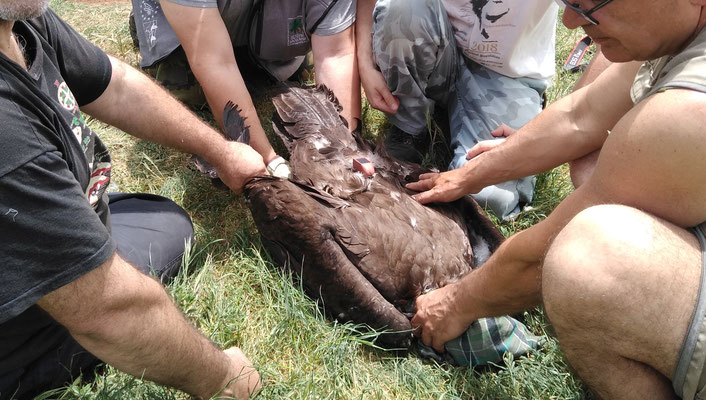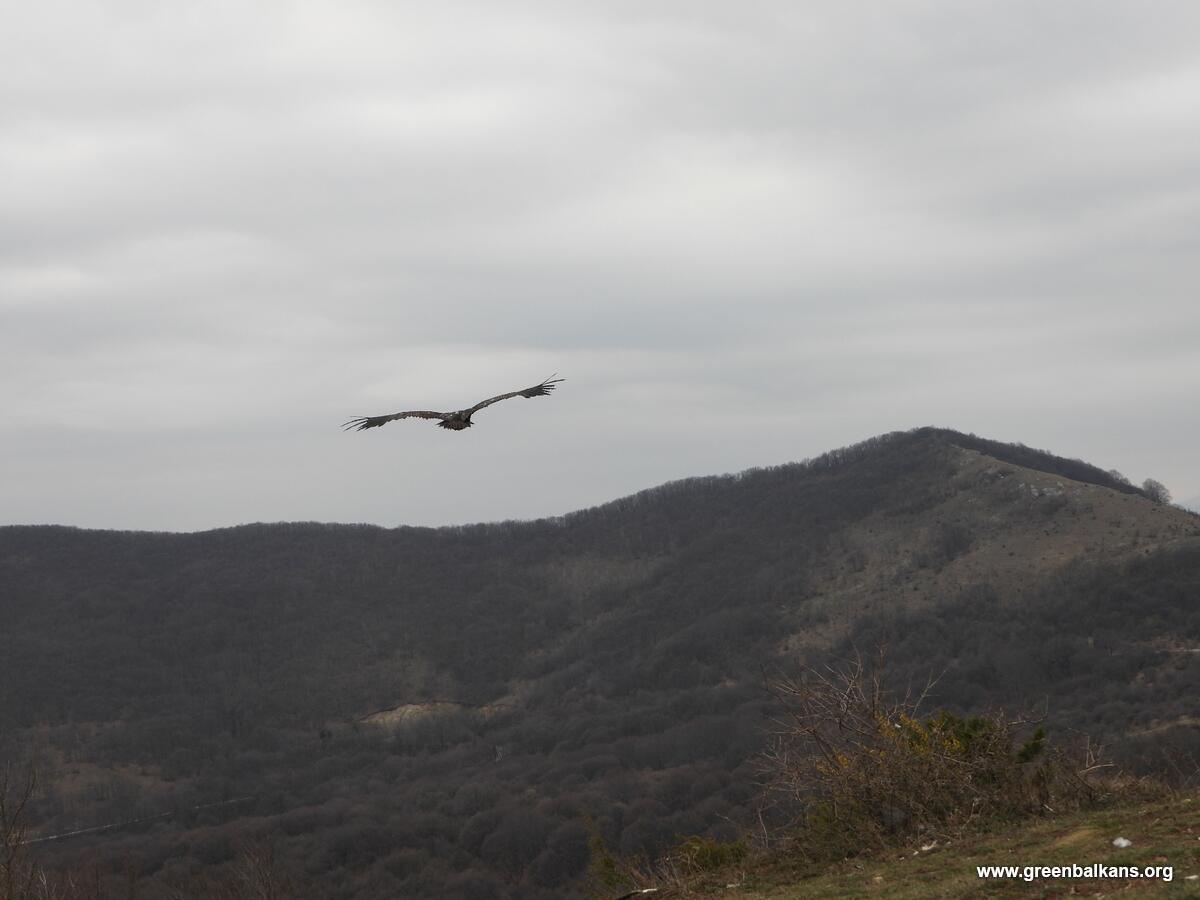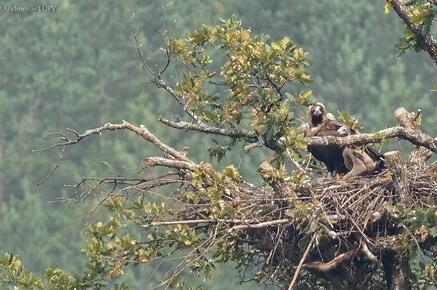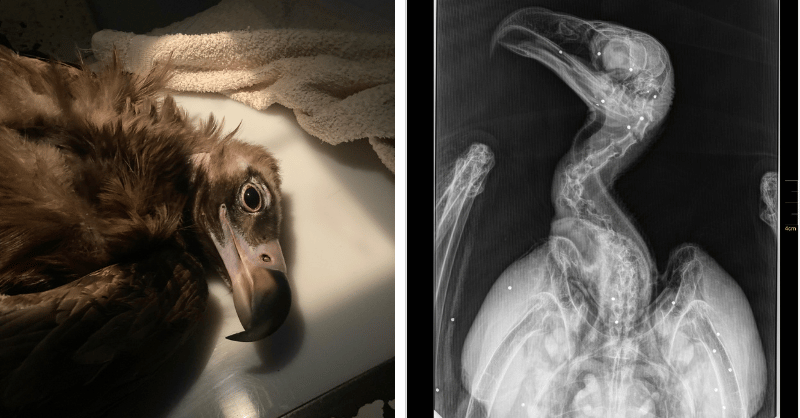
The Vultures Back To LIFE team released five additional Cinereous Vultures in a new release area for the species — the Vrachanski Balkan. This historic project project aims to reintroduce the species to Bulgaria to establish a nesting population, and releasing Cinereous Vultures to the wild plays a significant part towards fulfilling this mission.
Background of the Cinereous Vultures released
The Vulture Conservation Foundation (VCF) secured ten Cinereous Vultures last year for release in Bulgaria, donated by the Junta de Extremadura. These young vultures hatched and fledged in the wild at Extremadura, Spain, during 2017 and 2018. The young birds left their nests earlier and were found in distress, suffering from malnutrition and weakness. They were then taken to the wildlife rehabilitation centre of Los Hornos. After a period of recovery, they transported them to the wildlife rehabilitation centre of AMUS (Acción por el Mundo Salvaje) for a pre-transport quarantine period. The VCF organized the transport of these birds where they travelled over 4,000 km by land to reach Bulgaria. They arrived in Bulgaria on Monday 10 June and were received by the Vultures Back to LIFE project team. This was the second transportation of this species from Spain, in an effort to restore the Cinereous Vulture population in Bulgaria.
Release of five Cinereous Vultures at Vrachanski Balkan
At the end of last week, the Vultures Back To LIFE project team released five Cinereous Vultures in the Vrachanski Balkan Nature Park for the first time in this region. The five birds spent the last seven months at the acclimatization aviary of the Nature Park. Ahead of their release, the team equipped the birds with GPS transmitters, which gather insightful information about the birds and their movements and helps inform more accurate conservation measures. Colleagues from the Birds of Prey Protection Society, who manage the aviary in the Nature Park, together with the Green Balkans and the Fund for the Wild Flora and Fauna then released the five birds. These were four females named Stara Planina, Montana, Vratsa and Zhora, and one male named Baraba. This release coincides with the recent visits of Cinereous Vultures at the feeding station at the Nature Park, when Riga and Kutelka, along with a young unmarked specimen fed at the site.
Cinereous Vultures at the Vrachanski Balkan Nature Park

Since the beginning of May, Cinereous Vultures were visiting the feeding station at the Nature Park. The project team realized that the vultures were there thanks to their GPS transmitters.
The first at the scene was the Cinereous Vulture Riga that was released in September 2018 in the Kotel region. This bird is quite the wanderer. Last year she spent her summer in the Alps and she wintered in Greece, although she returned to Bulgaria this April where she spent the last two months roaming around until she reached the feeding station at the ‘Vrachanski Balkan’ Nature Park.
A few days later, Kutelka, which was released in March 2019 at the ‘Sinite Kamani’ Nature Park, also arrived at the feeding site. The two birds remained together and roamed the region of Northwest Bulgaria. On 11 May, they even took up a short trip to Romania, near the Turnu Severin region, and back to Vratza.
After that, Riga and later Kutelka, found the feeding station above the Dolno Ozirovo village, and have fed there a couple of times, which is the first visit of reintroduced Cinereous Vultures from the project there! A day later, another Cinereous Vulture joined in. The project team managed to observe a third, young unmarked Cinereous Vulture, feeding along with the other two and some Griffon Vultures. The third bird is most likely from the only active breeding colony on the Balkan Peninsula in the Dadia National Park in North Greece.
These latest observations of Cinereous Vultures in the ‘Vrachanski Balkan’ Nature Park give the team hope that the Cinereous Vultures will favour this region and hopefully nest there following their disappearance more than 70 years ago.
To stay tuned with the released Cinereous Vultures, make sure to sign up to our monthly newsletter.
Vultures Back To LIFE

Led by the wildlife conservation charity Green Balkans, with activities also implemented by the Fund for Wild Flora and Fauna, and bringing together partners from Bulgaria, Spain and Germany, Vultures Back to LIFE aims to reintroduce the cinereous or Eurasian black vulture to Bulgaria. The team will transfer and release around 60 birds, some from captive-breeding, but mostly coming from wildlife rehabilitation centers in Extremadura (Spain) into the wild in Bulgaria as well as creating supplementary feeding stations and improving populations of wild herbivores, improving the nesting conditions and creating artificial nest sites and tackling some of the major threats to vultures in the country such as insulating electricity pylons and illegal use of poison in the nature.






